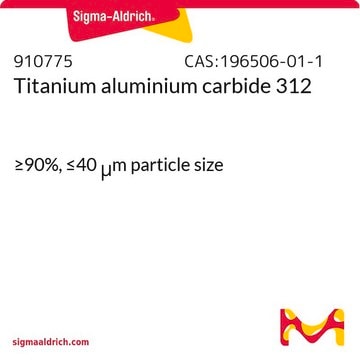695068
Hydrofluoric acid
ACS reagent, 48%
Synonyme(s) :
HF
About This Item
Produits recommandés
Qualité
ACS reagent
Densité de vapeur
1.27 (vs air)
Pression de vapeur
25 mmHg ( 20 °C)
Pureté
48%
Forme
liquid
Densité
1.15 g/mL at 25 °C (lit.)
Traces d'anions
chloride (Cl-): ≤5 ppm
phosphate (PO43-): ≤1 ppm
sulfate, sulfite (as SO42-): ≤5 ppm
Traces de cations
As: ≤0.05 ppm
Cu: ≤0.1 ppm
Fe: ≤1 ppm
heavy metals (as Pb): ≤0.5 ppm
Chaîne SMILES
[H+].[F-]
InChI
1S/FH/h1H
Clé InChI
KRHYYFGTRYWZRS-UHFFFAOYSA-N
Vous recherchez des produits similaires ? Visite Guide de comparaison des produits
Catégories apparentées
Description générale
Application
- Cyanohydrin alkyl ethers via chiral Bronsted acid-mediated hydrocyanation of vinyl ethers with silyl cyanides.
- N, N-Dimethylaniline hydrochloride salts via Pd-catalyzed Buchwald-Hartwig amination of aryl triflates with dimethylamines.
Mention d'avertissement
Danger
Mentions de danger
Classification des risques
Acute Tox. 1 Dermal - Acute Tox. 2 Inhalation - Acute Tox. 2 Oral - Eye Dam. 1 - Skin Corr. 1A
Code de la classe de stockage
6.1A - Combustible acute toxic Cat. 1 and 2 / very toxic hazardous materials
Classe de danger pour l'eau (WGK)
WGK 2
Point d'éclair (°F)
Not applicable
Point d'éclair (°C)
Not applicable
Certificats d'analyse (COA)
Recherchez un Certificats d'analyse (COA) en saisissant le numéro de lot du produit. Les numéros de lot figurent sur l'étiquette du produit après les mots "Lot" ou "Batch".
Déjà en possession de ce produit ?
Retrouvez la documentation relative aux produits que vous avez récemment achetés dans la Bibliothèque de documents.
Articles
Professor Gogotsi and Dr. Shuck introduce MXenes: a promising family of two-dimensional materials with a unique combination of high conductivity, hydrophilicity, and extensive tunability.
Notre équipe de scientifiques dispose d'une expérience dans tous les secteurs de la recherche, notamment en sciences de la vie, science des matériaux, synthèse chimique, chromatographie, analyse et dans de nombreux autres domaines..
Contacter notre Service technique









